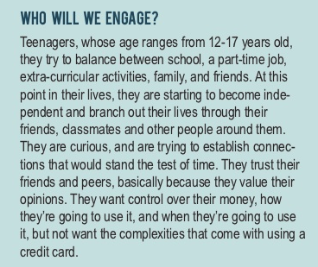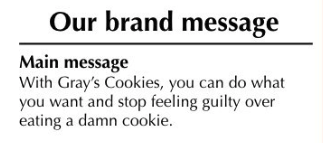How to Write a Creative Brief That Delivers Results
If you want your business to build trust and authority among your ideal customers, you need to regularly put out content.
But you don’t just “wing” it and hope for the best. That way lies failure.
For your content creation efforts to bear fruit, every piece of collateral you release has to be firmly anchored to a solid content marketing strategy.
You need to start asking the right questions.
How do you create content that stands out among the competition?
How can you make sure that content represents your brand well?
Is the content aligned with your business goals?
Will it resonate with your target audience and make them respond the way you want them to?
To pull off all of the above, you need a plan. But for that plan to work, you need to put it in writing.
You need a creative brief.
What is a creative brief?
A creative brief is a document that outlines the overall strategy of a creative campaign. You can think of it as a road map that helps creatives produce content that aligns with your company’s mission, goals, and objectives.
Whether you’re working with a creative agency or an in-house team, a creative brief is a short document that can help everyone see eye to eye on a project, from ideation to design all the way to implementation. It also gives your team a foundation or a set of metrics with which to gauge performance. Last but not least, a creative brief helps you, your team, and stakeholders to align expectations and consolidate all efforts from the outset.
Simply put, a creative brief is crucial to the success of a marketing campaign or a creative project. Without it, your content is doomed to fail.
There’s no one-size-fits-all approach to writing a creative brief, but it will ideally include the following:
- A short description of your company
- Brand statement
- Project objectives
- Single-minded proposition
- Preferred style, messaging, tone, and voice
- Target audience
- Competitors (How do you want to differentiate your company from them?)
- Specific project deliverables (number of pages, preferred formats, file sizes, etc.)
- Project timeline
- Budget specification
Once you’re able to organize all of the above information into a concise document, you have yourself a creative brief.
But is the creative brief good? More to the point, will it help your teams create content that your consumer base will love and respond to?
Here are best practices to help you write a brief that enables your creatives to generate the best possible deliverables for your brand.
1. Create alignment as you “put pen to paper”
Your radio advertisements, brochures, or blog posts may be educating, entertaining, or perhaps even making people’s lives a little more convenient in some way.
But if they’re not aligned with your organization’s strategy and objectives, chances are you won’t be educating and entertaining anyone for long.
Businesses, after all, are like relationships. They need to be mutually beneficial to survive.
Speaking of alignment, according to a 2017 PMI survey, businesses that align their project management to their business strategy are 38% more likely to meet their project goals than those that don’t.
This makes a lot of sense. Without unity of purpose among managers, stakeholders, designers, marketers, and content creators, most of the content you’re putting out is likely to fall flat. That’s what happens when your teams are not working towards a common goal.
People Firm founder and CEO M. Tamra Chandler said it best: “it’s better to be aligned to an OK strategy than to have a great strategy that nobody’s aligned to.”
So before you finalize your creative brief, don’t forget to go over it with your in-house team or the agency you’re working with. And then do the same with important stakeholders in your company. Ask for their feedback and opinion. You need every bit of input you can get to give your creative brief the polish and focus it needs to better deliver on the project’s objectives and goals.
Besides, talking about it ensures transparency across your team and guarantees that expectations are well-articulated and understood from the start. When all hands are on deck, it’s easier to steer the ship in the right direction.
2. Keep it consistent with your branding efforts
Branding is the single most important thing to running a business. Consumers, after all, are more likely to buy from brands they trust and recognize.
For your brand to have a strong positive impression on your target audience, everything you release into the wild needs to be consistent with your brand identity.
In other words, if you want to stand out from the competition, you need to tell a cohesive brand story.
Consistency breeds familiarity, after all.
And what better way to maintain brand consistency in your content creation efforts than to create a brief that aligns with your brand identity?
When writing your creative brief, make sure that it will help your teams create something that’s unmistakably your brand. What creative elements (typography, colors, logos, messaging, etc.) best represent your brand? How do you package your assets in a way that communicates and reinforces your company’s values, messages, and emotions?
You can start by working out the branding elements that you feel will resonate with your audience and catapult your business to success. If you communicate those elements clearly and effectively in your creative brief, your teams are more likely to create deliverables that further strengthen your brand and yield positive results for your business.
Pro-tip: Implementing a digital asset management (DAM) solution is one great way to help your team stay on brand. By allowing them to store, manage, organize, and distribute files from one central location, a DAM solution ensures that the right files and assets are used across multiple content creation workflows.
3. Keep it short and to the point
At the end of the day, a creative brief is a guide and nothing more. Its one single purpose is to steer the creatives you’re working with in the right direction.
Want to release content that resonates with your content base and drives results? Keep your creative brief simple and straight to the point. Use clear language and avoid using jargon and unnecessary words. Don’t provide too many examples. Ideally, one relevant example is enough.
As much as possible, keep your creative brief clear and lean without sacrificing comprehensiveness. Remember, the goal here is to give your creatives a guide they can easily understand. This way, you can narrow your creatives’ focus to a fine point, resulting in content that does exactly what you intended it to do.
4. Describe your target audience to a tee
If you want your creative brief to deliver great results, make it clear that the content your teams are creating is not for you, but for your target audience.
Why? Because you want them to channel their creative efforts towards creating something that makes your target audience perceive your brand the way you want it to be perceived. You want content that will resonate with them and make them trust your brand more.
But for that to happen, you need to describe your target audience as best you can. It doesn’t have to be long. The more simply you can describe their unmet needs, what they care about, what gets their attention, and what helps them sleep at night clearly and in as few words as possible, the better.
Want a good example of how to describe your target audience? Paypal’s creative brief did it well, as you can see below.

To be able to describe your target audience accurately, you need to get a well-rounded understanding of them first. You need to get information like:
- Demographic data (location, age, income range, gender, marital status)
- Psychographic data (interests, beliefs, aspirations)
- Key personality traits (buying habits, frustrations, hobbies, likes and dislikes)
By making your teams understand what makes your consumer base tick, it will be easier for them to nail down the branding elements (design, messaging, tone, etc.) that will hit home with your customer base.
5. Emphasize one key message
To get your target audience to respond exactly how you'd like, your content needs to convey one key message that will leave a lasting impression on them. Of course, that key message needs to speak to your audience’s needs to have the intended effect. By writing a brief that focuses on conveying that single proposition, it becomes much easier for your team to create something that will resonate with your audience.
This creative brief by Beloved Brands demonstrates how to highlight one key message to an intended audience:

6. Use a template
The web is teeming with free creative templates you can use at your leisure. Joe Weller of Smartsheet.com, for instance, was kind enough to create different types of brief templates across multiple formats, all of which you can download for free.
Final Word
Writing an effective creative brief can be challenging. But with a steadfast commitment to knowing your target audience, you can position your brand as the go-to solution to their problems. Go the extra mile when clarifying your message and strategy in your creative brief and you’re well on your way to churning out great content that not only boosts your revenue but also makes brand ambassadors out of your customer base.
